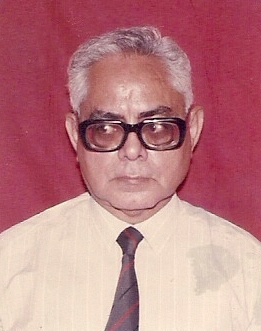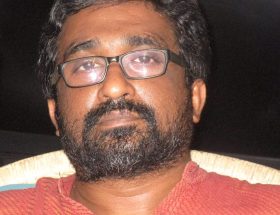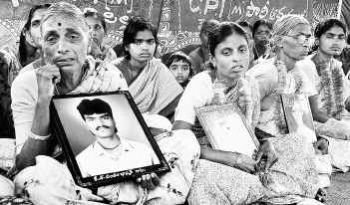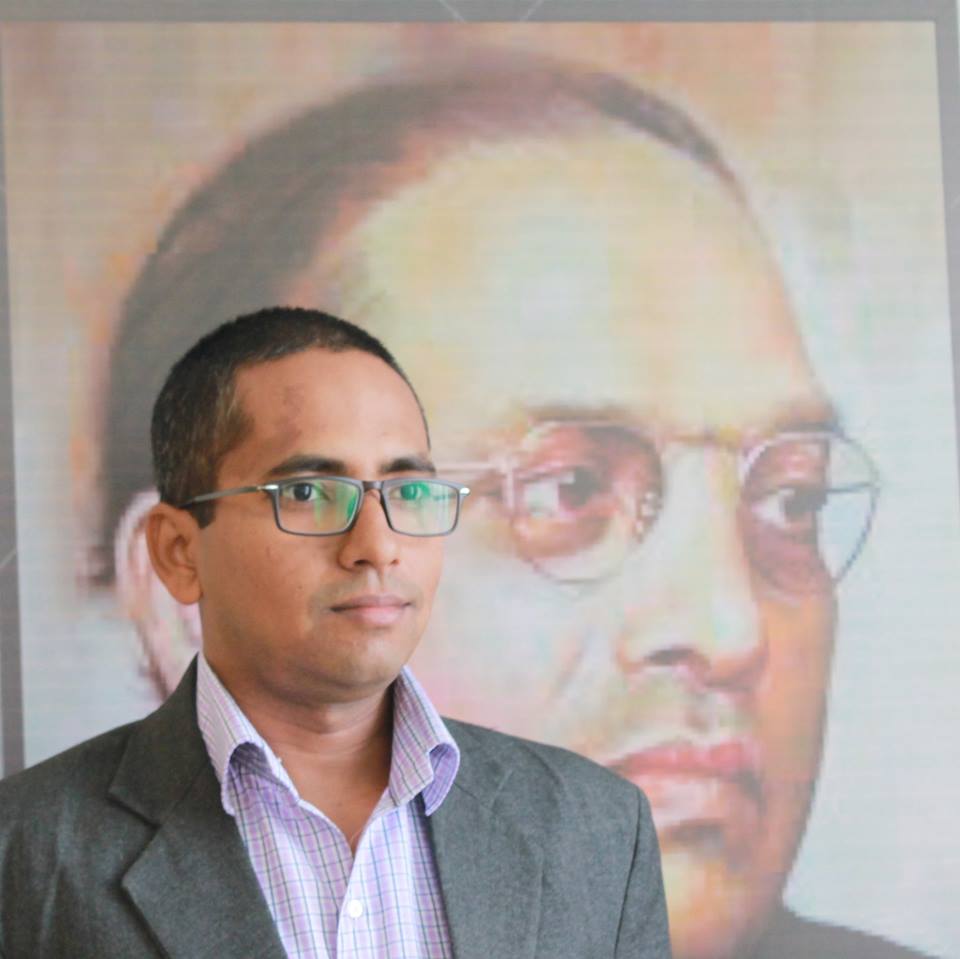Pramod Kumar
 A common refrain of the anchors/editors, during the discussions in the studios of news channels and even in print is that “Don’t shoot the messenger”. It is true that except for niche media houses which happen to be affiliated either to a political party or an ideology, the mainstream media had been diverse enough to empower its consumers to make their own decisions. But, sadly, the diversity has vanished: it is a monolith (at times, practically, a lynch mob) now. The media professionals, their protestations of being liberal and in tune with the modern sensibilities notwithstanding, are no longer mere messengers. They have abandoned journalism and have moved into public relations or brand building while abusing all the rights journalists enjoy in a democratic set-up. They also arrogate to themselves the role of movers and shakers and even agenda setters.
A common refrain of the anchors/editors, during the discussions in the studios of news channels and even in print is that “Don’t shoot the messenger”. It is true that except for niche media houses which happen to be affiliated either to a political party or an ideology, the mainstream media had been diverse enough to empower its consumers to make their own decisions. But, sadly, the diversity has vanished: it is a monolith (at times, practically, a lynch mob) now. The media professionals, their protestations of being liberal and in tune with the modern sensibilities notwithstanding, are no longer mere messengers. They have abandoned journalism and have moved into public relations or brand building while abusing all the rights journalists enjoy in a democratic set-up. They also arrogate to themselves the role of movers and shakers and even agenda setters.
The disproportionate and hugely positive coverage of Narendra Modi’s campaign as against the miserly and negative coverage of the other candidates only confirms that claims of media’s impartiality are hollow. The compact worked out amongst the corporates, its cohorts RSS and media have been used to give Modi a badly needed image makeover. The media professionals are willing accomplices because of common class/caste interests. They supplemented Modi’s campaign, its technological glitz, and turned it into an advertisement campaign which resonated like those of fairness creams, Pied Piper (Deo) sprays and sponsored TV slots of Babas.
The media professionals have used their expertise in exploiting all kinds of journalistic tactics to refurbish the Modi persona. The tailoring, suppressing, overplaying or underplaying of news/facts, using “sources”, adulatory spin, positive adjectives, pre-scripted interviews all have been used, without qualms, to depict Modi as “can, will and must do” Prime Minister. His “fierce determination” to succeed has been amplified 24/7. His persona has many characteristics and dimensions but some of them like being vindictive (Haren Pandya), intolerant (Suresh Joshi), communal (relief camps as child producing factories – ‘hum paanch, hamare pacchis’) and insecure (tendency to concentrate all power in his own hands and distrust of Institutions like Lok Ayukta and RTI) have been ignored.
The media has also tried to impress that Modi has “moved on” from 2002 Godhra riots. It has insisted that Modi did not rake up his pet Hindutva peeves in his campaign speeches. But it ignored his coded messages to Hindutva brigades by claiming that rhinos are being killed in Assam to make room for Bangladeshis, pink revolution, burqa secularism and his pointed reference to India’s enslavement since 12th century. It also ignored that he allowed his aide Amit Shah to polarise the electorate. Modi also did not say a word about the riots in Muzaffarnagar and made only a passing reference, clubbing it with the Badaun incident, to the killing of Mohsin Shaikh for being a Muslim.

The corporates’ bankrolling of campaign and media’s efforts have given Modi a strong mandate. But it is forgotten that there is another player too whose contribution is much bigger. The multitude of Swayamsewaks of the RSS worked day in and day out in UP and Bihar to canvass votes for Modi. The corporates and their class/caste affiliates are focussed only on neo-liberal policies. They have largely remained disengaged with the political process so far and have been almost contemptuous and dismissive of the poor and downtrodden. They have benefitted the most and expect to continue benefitting substantially from Modi’s free market economy. Hence the media and the free market fundamentalists argue for abolition of meagre social welfare measures and curtailing of “wasteful” subsidies. However, RSS cadres’ indoctrination does not let them bother about reforms and they just want India to be a Hindu Rashtra.
If Modi demonized UPA Government, the media and the corporates have not been far behind in lampooning UPA and blaming it for the economic slowdown. If it was not policy paralysis, it was the retrospective amendments of the tax laws. If it was not the delays in implementing plans, it was crony capitalism.
Modi rued the fact that he has not been allowed the honeymoon period of 100 days. But it was he who launched a promotional campaign of “clear vision, concrete action” through a five-and-a-half minute video and a poster that provided in bullet points the “achievements” of the 30 decisive days of Modi Sarkar ( The Hindu – Hubli ed. – of 27.6.14). Did he expect accolades for inflation and hike in rail fares? The media too jumped into the fray through programmes and write-ups and extolled the governance which till then had been restricted to loud proclamations of pious intentions, without road maps and formation of SIT on black money, not of its own volition, but on orders from the Supreme Court. The two budgets, rail and general, are also full of ideas but short on substance and follow the policies which Modi had roundly criticised during the election campaign.
The media has given short shrift to Modi’s proclivity for sowing doubts about persons and institutions. The “decisive” person has revealed that under the veneer of an autocratic persona, a sense of insecurity and lurking paranoia does exist. He has apparently retreated behind the praetorian guards A.K. Doval and Nripendra Mishra from Vivekanand International Foundation, the RSS sponsored think tank. Is it to ensure that extraneous influences do not lead to any deviation from the ideological path? Staff members drafted from Gujarat bureaucracy, it seems, constitutes a second line of defence. Modi is also seeking a pliable bureaucracy. He has ordered his Ministers not to appoint OSDs and PS who were attached to Ministers of earlier Government. Is it an attempt to divide bureaucracy into “with us/against us” camps? He has kept his Ministers on tenter-hooks by asking bureaucrats to approach him directly, without Ministers, for representations/presentations.
Further, the SC collegium’s nominee for elevation to the Supreme Court, Gopal Subramaniam, has had to suffer humiliation and discomfiture because of the planted stories attributed to official sources. It has been done, apparently, to let awareness spread that Modi knows how to scuttle the candidature/nomination/appointment of a perceived inconvenient person to a statutory or a constitutional position. A few NGOs, again perceived to be capable of creating road-blocks have had to face the same fate. NGOs are not beyond scrutiny but why can’t the Government be transparent and express its reservations openly instead of taking recourse to leaks from IB/CBI and “sourced” stories in the media. One must point out that such tactics have been used in Gujarat also against Teesta Setalvad, Javed Anand and Medha Patkar. Patkar has been hounded for a long time by V.K.Saxena of the National Council of Civil Liberties in Ahmedabad for her opposition to the way Narmada project has been executed.
The one constant in the media’s critique of Manmohan Singh has been that he has allowed the prestige and authority of PM’s Office to be lowered under pressure. Modi, however, has a majority in the parliament and yet he has rolled back half of the proposed increase in revenues from rail fare hikes under pressure. Last year, Modi mocked the Indian PM’s customary independence day address to the nation from Red Fort by turning a CM’s address to his state into an all India one with media’s help almost immediately after the then PM had concluded his. Did this add to the prestige of PM’s office? Yes, Modi’s penchant for spectacle which turned the solemn swearing-in ceremony into a virtual coronation and his willingness, jettisoning his own party’s clouded vision, to walk the same talk about relations with neighbours that UPA had walked has met with approval.
Another notable phenomenon is that the media has hardly ever put an inconvenient question to him either during the campaign or after his assuming office. The media, of course, plays out a charade of neutrality regularly but unconvincingly. For example, the media has ignored the Supreme Court’s verdict in the Akshardham terror attack case wherein the Court censured the Gujarat police and the then Home Minister of Gujarat, Narendra Modi. Similarly the sting operation of the Cobra Post, revealing the nature of preparations made for the demolition of the Babri Masjid, was given a short shrift. No questions have been asked about VHP leader Ashok Singhal’s exhortation to Hindu couples to produce at least five children and about RSS cadre’s appeal to Hindus in UP and Bihar to vote 100% failing which the Hindus will be history. The truth or otherwise of Gujarat’s development/ governance too has not been properly investigated. Now that Modi has disclosed his marital status, has anybody questioned him about the fate of Jashodaben? She, being a traditional lady who treats her husband as a god, may not complain but it does require some clarification about the future of this marriage. How can a person who deserted his wife and let her fend for herself assure the well-being of the oppressed gender?
Modi has won kudos for the proposed bullet train to Agra, Udhampur-Katra rail link, INS Vikramaditya, PSLV-C23 and URI-11 Hydro Project but is it not ironical that these are based on “gifts” from the outgoing UPA Government? Even Navika Kumars of the Times Now have come forward to provide alibis to Modi Sarkar for its difficulties in keeping the promises about inflation and growth and justify/advocate a dose of bitter medicine. She has claimed that a “source” in the Finance Ministry has informed her about the holes in our economy. The “source” has become a convenient tool and is regularly used to manipulate the coverage of Modi Sarkar. The TOI, almost daily, has a “sourced” story which either gives a favourable spin to Modi or creates doubts about the opponents’ claims. The classic case has been the story about Switzerland’s readiness to reveal the names of Indians who hold “treasures” in its banks. The story was attributed to a Swiss official who refused to reveal his name since he was not authorised to speak to the media. Now, Arun Jaitley has told Parliament that Switzerland by a letter of 4.7.14 informed the GoI that no such list existed.
Modi has been portrayed by the media as a decisive leader who has the necessary attributes to deliver us from the economic woes and governance blight. If he had been demonized once for reasons not all that unbelievable, he is being lionized by the media in terms which do not really gel with his personality’s many facets. The process started in 2012, before the Gujarat Assembly elections when the media started using, without any reservations, the footage, clippings of his meetings and even editorial guidance provided by Modi’s campaign management team. Every action, every tweet, every demagogic assertion has been treated with deference and implied message to the viewers/readers is that the “good times” are just round the corner. The media lovingly dwelt on his sartorial elegance, choice of pens and watches and his speeches which held audience attention by way of appeals to low emotions and mixing facts with fiction. The media has been generous also in proffering positively judgmental spin to everything connected with Modi. The Modi-obsessed media would have willingly provided a “halo” too if it was made available.
It is too soon to pass any judgment on Modi Sarkar which is around three months old. At the same time, it is not the media’s job to be hyper adulatory about it and not question or evaluate the progress so far in the light of aims and values of our constitution. So far the promised change is hardly visible on the horizon but the healthy continuity is re-assuring. Also, is it not ironical that Modi has turned his back on the media which, in no small measure, helped him win? He has neither appointed a Media Advisor nor has he continued with the practice of taking along selected journalists on his visits abroad. There has been no interaction with media for quite some time and innocuous and formulaic tweets are used, as and when required, to pass on any information. It reveals that under the 56 inch chest, there is a person racked by lack of self-belief and doubts. It has led to his attempts at concentrating all power in his own hands creating a miasmic ambience reeking of suspicion, palpable distrust and unstated fear of reprisals. The furtive attempts to force resignations of governors – an action which was found un-democratic by the BJP when it was in opposition and had even approached the Supreme Court – has become kosher now. Testing of waters in respect of Article 370, Uniform Civil Code, use of CBSE to propagate Sanskrit, and choosing to become leader of both houses – they are all indications that the person in charge lacks self-confidence.
Modi’s electoral victory has facilitated the emergence of conservatives and reactionaries, on the centre stage, led by the corporate and Hindutva brigades. They want to conserve and perpetuate the stranglehold on power structure and the “divine” and diabolical mechanism of caste hierarchy. The corporates keep offering lofty platitudes and synthetic commiseration for the plight of the lower castes but do everything to resist any change in the privileges they are accustomed to. It regularly rants against subsidies and welfare measures through almost daily presence of the likes of Sunil Alaghs/Rajiv Kumars in news studios and Arvind Panagariyas/Bibek Debroys in print. The RSS too is opposed to any change in the “divine” mechanism and has acquiesced to going along with the corporates. Nevertheless, it must resolve contradictions like 1) cultural nationalism which stands for one nation, one people and one culture and the reality of plurality 2) letting in modern East India Companies through FDI, 3) the fate of Swadeshi Jagran Manch and its economic policies, 4) homogenisation of Hindus by raising concerns of Hindus being reduced to a minority and using shibboleths of victimhood and persecutions and finally 5) the negation of values of tolerance, assimilation, accommodation and equal respect for all religions.

It is here that the role of the media becomes critical. The present media houses have given up on journalism and are busy promoting their own vested interests and the corporates. But the pursuit of growth through neo-liberal means is being questioned by the likes of Thomas Piketty who has arrived at a conclusion, after extensive research, that growth does not necessarily lead to equality. The trickle generated by it moves upwards and not downwards.
India needs not mere economic equality for the poor, marginalised and discriminated but also restoration of human rights and dignity which have been denied to them for ages merely on the basis of one’s birth. This requires radical overhaul of the power structures. There is urgent need to expand and speed up affirmative action. The bogeys of “Merit” and “one people” must be rubbished and discarded till equality, in real terms, becomes a fact of life. The lower castes too are “aspirational” now. The times have changed and are changing where conservatives must adjust to the existing and developing realities and the Hindu-Right, instead of showering horns and fangs on minorities, should co-opt them too in nation-building.
This is possible only if the media too transforma itself and frees itself from the corporate yoke. It must rediscover and renew its faith in journalism. Will Leveson Report (on UK media) help? Let media houses be run by public trusts, dedicated to public service, financed from public funds but without the participation of three other pillars of democracy. The imapartiality and the diversity of views are of paramount importance.
~~~
Pramod Kumar is a retiree from a multi-national corporate, lives in Goa, and has interests in theatre and media. He takes a keen interest in the media and his pieces have found space in local Goan newspapers like Herald and in media sites like The Hoot.
Cartoons by Unnamati Syama Sundar.
.










